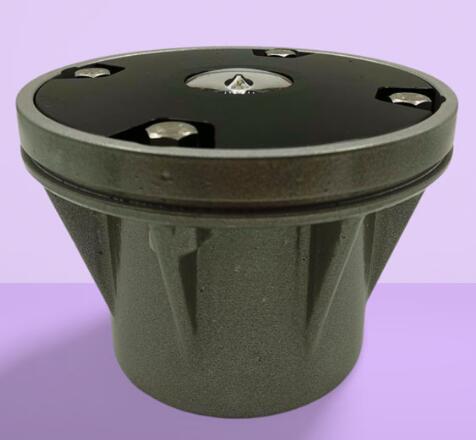Helipad LED Lights: Illuminating Safe Landings in Modern Aviation
Helicopters play a vital role in diverse fields, from emergency medical services and offshore operations to corporate transport and defense. As helicopter traffic increases, the safety and efficiency of landing zones have become more critical than ever. At the heart of this operational safety is the use of helipad LED lights, a modern solution that offers enhanced visibility, durability, and energy efficiency for helicopter landing zones.
This article delves into the features, benefits, and applications of helipad LED lights, showcasing their indispensable role in aviation.

What Are Helipad LED Lights?
Helipad LED lights are advanced lighting systems specifically designed for illuminating helicopter landing pads. Unlike traditional halogen or incandescent lights, LED lights offer superior brightness, energy efficiency, and longevity. These lights are typically used to outline the helipad perimeter, guide approach paths, and illuminate obstacles, ensuring pilots can identify the landing zone clearly, even in adverse weather or nighttime conditions.
Modern helipad LED lights often come with additional features such as dimming capabilities, wireless control, and solar-powered options, making them suitable for both permanent and temporary installations.
Key Features of Helipad LED Lights
Superior Brightness and Visibility
Helipad LED lights produce bright, uniform illumination that is easily visible from a distance, even in challenging conditions such as fog or heavy rain. The precision of LED lighting helps pilots distinguish the helipad from surrounding lights and terrain.
Energy Efficiency
LEDs consume significantly less energy than traditional lighting technologies, reducing operational costs. Solar-powered options further enhance energy savings and are particularly useful in remote or off-grid locations.
Longevity and Durability
The lifespan of LED lights far exceeds that of traditional bulbs, often lasting tens of thousands of hours. This durability minimizes the need for frequent replacements, reducing maintenance costs and downtime.
Weather Resistance
Helipad LED lights are built to withstand harsh environmental conditions, including extreme temperatures, rain, snow, and saltwater exposure. Their robust design ensures reliable performance in both urban and remote settings.
Customizable Lighting Configurations
LED systems can be customized to suit the specific requirements of the helipad. For instance, different light colors (such as green, yellow, or white) can be used to mark distinct zones, while flashing lights can guide approach paths or signal warnings.
Types of Helipad LED Lights
Perimeter Lights
These lights define the boundaries of the helipad, ensuring pilots have a clear visual reference for the landing zone. They are usually installed in a circular or rectangular pattern.
Approach Path Lights
Approach lights guide pilots to the helipad by marking the safe approach angle. These lights are typically directional and placed along the flight path leading to the landing area.
Surface-Mounted Lights
Installed flush with the helipad surface, these lights provide illumination without protruding, reducing the risk of damage from helicopter skids or rotor wash.
Solar-Powered Lights
Solar-powered helipad LED lights are an excellent choice for remote locations or areas where electrical infrastructure is limited. These lights store energy during the day and operate independently at night, making them highly cost-effective and eco-friendly.
Obstacle Lights
Obstacle lights mark potential hazards around the helipad, such as tall structures or nearby equipment. They are often red or flashing to attract attention and warn pilots.
Benefits of Helipad LED Lights
Enhanced Safety
The primary advantage of helipad LED lights is their ability to enhance safety by providing clear and reliable illumination. Pilots can easily locate the helipad and land with confidence, even in low-visibility conditions.
Cost Savings
LED technology offers significant cost savings due to its low energy consumption and minimal maintenance requirements. Solar-powered options further reduce operational costs by eliminating the need for external power sources.
Environmentally Friendly
LEDs consume less energy and have a smaller carbon footprint compared to traditional lighting systems. Solar-powered helipad LED lights contribute to sustainability by harnessing renewable energy.
Ease of Installation and Maintenance
Modern helipad LED lights are designed for quick installation and minimal maintenance. Wireless and solar-powered options eliminate the need for extensive wiring, simplifying setup in remote or temporary locations.
Regulatory Compliance
Many helipad LED lights meet international aviation safety standards, ensuring compliance with regulations. This is particularly important for commercial, medical, and military operations.
Applications of Helipad LED Lights
Hospital Helipads
In emergency medical services, rapid and safe helicopter landings are crucial. Helipad LED lights ensure clear visibility for pilots transporting patients, even in challenging conditions.
Offshore Platforms
Offshore oil rigs and wind farms rely on helicopters for transportation and logistics. Durable and weather-resistant helipad LED lights are essential for safe landings in these remote locations.
Urban Rooftop Helipads
Many corporate buildings and hotels feature rooftop helipads. Helipad LED lights help pilots navigate urban environments and land safely amidst city lights.
Military and Defense Operations
Military installations require robust and reliable lighting systems for helicopter operations. Helipad LED lights are often used in tactical and remote locations due to their durability and versatility.
Temporary and Remote Helipads
For disaster relief, construction, or exploration projects, portable and solar-powered helipad LED lights provide a practical solution for creating temporary landing zones.
Helipad LED lights have revolutionized the aviation industry by offering a safe, reliable, and energy-efficient lighting solution for helicopter landing zones. Their superior brightness, durability, and adaptability make them indispensable in various applications, from emergency medical services to military operations.
As the demand for sustainable and cost-effective aviation solutions grows, helipad LED lights are set to play an even greater role in ensuring safe and efficient helicopter landings worldwide. Whether for a bustling urban rooftop or a remote offshore platform, these lights illuminate the way, enabling pilots to land with confidence and precision.
